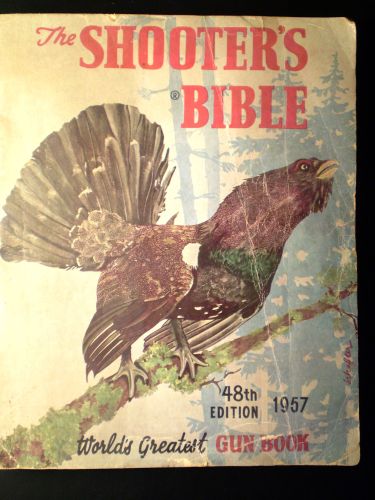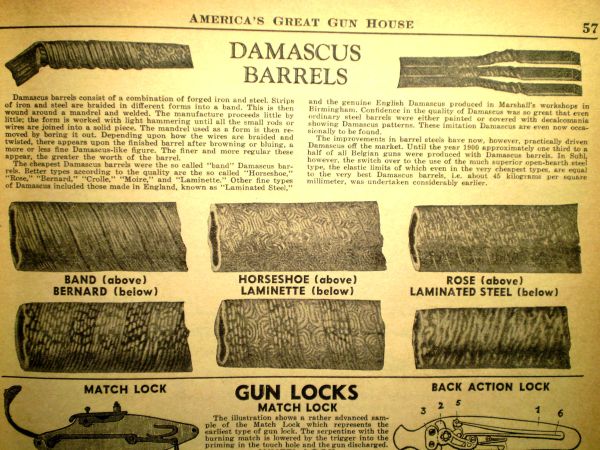
Over the transom:
"Damascus barrels consist of a combination of forged iron and steel. Strips of iron and steel are braided in different forms into a band. This is then wound around a mandrel and welded. The manufacture proceeds little by little; the form is worked with light hammering until all the small rods or wires are joined into a solid piece. The mandrel used as a form is then removed by boring it out.
Depending upon how the wires are braided and twisted, there appears upon the finished barrel after browning or bluing a more or less fine Damascus-like figure. The finer and more regular these appear, the greater the worth of the barrel. The cheapest Damascus barrels were the so called “band” Damascus barrels. Better types according to the quality are the so called “Horseshoe,” “Rose,” “Bernard,” “Crolle,” “Moiré," and “Laminette.” Other fine types of Damascus included those made in England, known as “Laminated Steel,” and the genuine English Damascus produced in Marshall’s workshops in Birmingham.
Confidence in quality of Damascus was so great that even ordinary steel barrels were either painted or covered with decalcomania showing Damascus patters. These imitation Damascus are even now occasionally to be found. The improvements in barrel steels have now, however, practically driven Damascus off the market. Until the year 1900 approximately one third to a half of the Belgian guns were produced with Damascus barrels. In Subl, however, the switch over to the use of the much superior open-hearth steel type, the elastic limits of which even in the very cheapest types, are equal to the very best Damascus barrels, i.e. about 45 kilograms per square millimeter, was undertaken considerably earlier."
Source: Stoeger’s The Shooters Bible, 48th Edition, page 57, 1957:




